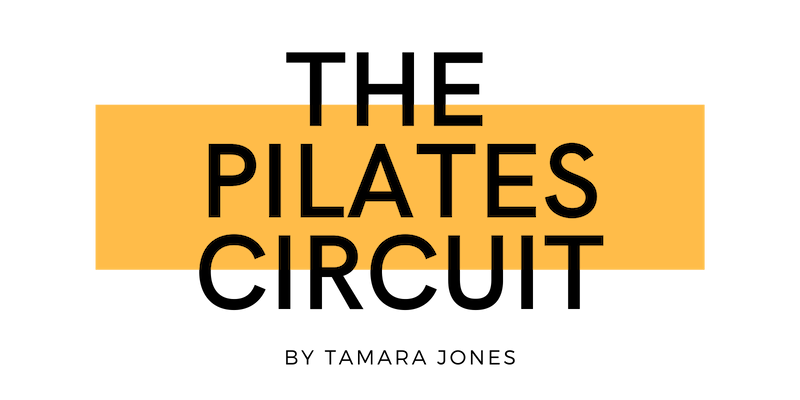Is Pilates Good for Arthritis? (5 Ways It Can Help)
Living with arthritis can be challenging. Incorporating the benefits of Pilates for arthritis into your routine can offer significant relief and improve your quality of life.
Understanding Arthritis and Its Challenges
Arthritis is a prevalent condition impacting millions globally. It causes joint inflammation and stiffness, resulting in pain and limited movement.
Managing arthritis can be challenging and requires a comprehensive approach to alleviate symptoms and improve quality of life.
The Role of Exercise in Managing Arthritis
Exercise is a crucial part of arthritis management. It helps maintain joint function, reduce stiffness, and improve overall physical health.
Is Pilates Good For Arthritis Relief?
Pilates' focus on strengthening muscles, improving flexibility, and enhancing overall body awareness is beneficial for individuals with arthritis. By targeting these areas, Pilates can help alleviate many symptoms associated with arthritis.
How Pilates Helps Alleviate Arthritis Symptoms
Pilates' controlled movements and breathing techniques can be tailored to accommodate the specific needs of those with arthritis. The gentle exercises can help reduce pain, increase mobility, and improve overall joint function.
The Top 5 Benefits of Pilates for Arthritis
Pilates is beneficial for arthritis because it emphasizes gentle, controlled movements that help strengthen muscles without putting excessive strain on the joints.
#1) Pilates Offers Low Impact Exercises
The low-impact exercises of Pilates are gentle on the joints. This provides a safe way to stay active.
#2) Gentle Strengthening and Stretching
The strengthening and stretching exercises in Pilates help build muscle strength and flexibility without putting undue stress on the joints.
#3) Improved Joint Mobility
Regular Pilates practice can enhance joint mobility by promoting fluid movement and reducing stiffness. Improved joint mobility can make it easier to perform daily tasks without pain.
#4) Enhanced Posture and Balance
Pilates' emphasis on proper alignment and balance can help improve posture. Good posture reduces the strain on joints and muscles.
#5) Pain Relief and Stress Reduction
The controlled, mindful movements of Pilates can help reduce pain and promote relaxation.
Choosing the Right Pilates Approach for Arthritis
There are various Pilates styles and modifications available. It's important to find a method tailored to your specific needs and limitations.
Mat Pilates vs. Reformer Pilates
Mat Pilates involves exercises performed on a mat, using body weight for resistance. Reformer Pilates uses a specialized machine with springs and pulleys to add resistance and support. Both approaches can benefit arthritis, but the choice depends on individual preferences and specific needs.
Customizing Your Routine for Comfort
Customize your Pilates routine to ensure comfort and safety. Work with a certified Pilates instructor who understands arthritis and can help you modify exercises to suit your capabilities and avoid any movements that may cause discomfort.
Getting Started with Pilates for Arthritis
To get started with Pilates for arthritis, take key steps to ensure a safe and effective practice.
Tips for Beginners
Consult with your healthcare provider to confirm that Pilates is appropriate for your condition and to discuss any specific limitations or precautions.
Seek out a certified Pilates instructor with experience working with individuals with arthritis. They can tailor exercises to your needs and help you avoid movements that could exacerbate your symptoms.
Start with gentle, low-impact exercises that focus on improving flexibility, strength, and joint stability, and gradually progress as your comfort and ability improve.
Listen to your body and communicate with your instructor, making adjustments as
Ready to experience the benefits of Pilates for arthritis?
Achieve strength and balance with private Pilates in NY. Our one-on-one sessions are designed to fit your goals, whether you’re aiming to improve posture, gain flexibility, or build core strength.
Book an intro session today to get started with a customized plan from our expert instructors. With locations at the Chelsea Private Pilates Studio and NOMAD Pilates Studio, we’re here to support you in a private and welcoming setting.
FAQs
-
Hiring a private Pilates instructor offers personalized attention, tailored workouts, and focused guidance. This leads to faster progress and reduced risk of injury. Working with a private instructor also allows you to address specific goals and receive immediate feedback.
When you take group classes, you get the benefit of movement but often not the progression and programming of working with a private instructor.
By focusing on form and weekly progressions, you’ll achieve your goals and see a difference a lot faster with a private trainer.
-
Yes, private Pilates training is highly beneficial for beginners as it allows for personalized instruction and guidance tailored to individual needs. A private instructor can introduce beginners to the fundamentals of Pilates, including proper alignment, breathing techniques, and foundational exercises.
Private sessions offer a safe and effective way for beginners to learn Pilates principles and develop a strong foundation before progressing to more advanced techniques.
For this reason, most studios recommend starting with privates before progressing to groups.
-
Yes, Pilates is suitable for beginners and can be adapted to accommodate individuals with injuries or physical limitations. Pilates exercises can be modified to suit different fitness levels and abilities, allowing beginners to progress at their own pace and individuals with injuries to participate safely.
A qualified instructor can provide guidance on appropriate modifications and ensure exercises are performed with proper form and technique to minimize the risk of exacerbating injuries.
The beauty of Pilates is how customizable it can be. As long as you’ve been cleared to work out by your doctor or physical therapist, Pilates is the perfect next step.
Meet Tamara – Your Pilates Expert
Hi! I’m Tamara, a Certified Pilates Instructor and founder of The Pilates Circuit in NYC. With 9+ years of experience, I specialize in results-driven, athletic Pilates to improve posture, core strength, and overall wellness. Whether you're recovering from diastasis recti or leveling up your fitness, I’m here to guide you every step of the way!
Find us on Instagram:


